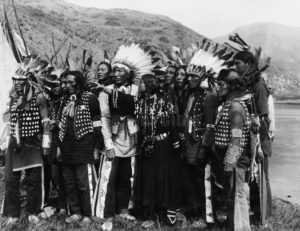The origin and evolution of sign language represent a rich tapestry of human communication, often overlooked in the broader historical narrative. Sign language, a visual-gestural mode of communication used by deaf communities, has a deeply rooted history that spans cultures and civilizations across the globe.
Early Beginnings
The history of sign language can be traced back centuries, with evidence suggesting its existence in ancient societies. In ancient Greece, for instance, philosophers like Plato referenced a form of manual communication used by the deaf in his dialogues. Similarly, indigenous tribes across continents developed their own sign systems to facilitate communication within their communities.
However, the formal documentation and recognition of sign language as a structured system of communication began to emerge in the 18th century. In 1755, the first book on sign language, “Les Sourds-Muets,” authored by the Abbe de l’Epee, marked a pivotal moment in the history of sign language.
Abbe de l’Epee and the Birth of Formal Sign Language
Abbe Charles-Michel de l’Epee, a French cleric and educator, is often credited as a pioneer in the development of sign language. In the mid-1700s, he established the first public school for the deaf in Paris, known as the National Institute for Deaf-Mutes. De l’Epee recognized the innate capacity of deaf individuals to communicate visually and believed in their intellectual capabilities.
De l’Epee observed and studied the natural sign language already in use by the deaf community. He systematically organized and formalized these gestures and signs into a structured method of communication. His efforts laid the foundation for what is now known as French Sign Language (LSF), which became one of the foundational influences for many modern sign languages.
Spread and Evolution
As the concept of formal sign language gained recognition, it spread across Europe and beyond. Schools for the deaf were established in various countries, each contributing to the evolution and diversification of sign languages.
In the United States, Thomas Hopkins Gallaudet played a crucial role in the development of American Sign Language (ASL). Gallaudet traveled to Europe in the early 19th century to study teaching methods for the deaf. He met Laurent Clerc, a deaf educator from France, and together they founded the first permanent school for the deaf in America, now known as the American School for the Deaf. This collaboration led to the fusion of LSF and local sign languages, resulting in the creation of ASL.
Sign Language Today
Today, sign languages are recognized as fully-fledged languages, each with its own grammar, syntax, and regional variations. They continue to evolve and adapt, reflecting the cultural and linguistic diversity within deaf communities worldwide.
Despite its historical and linguistic significance, sign language has faced periods of marginalization and suppression. However, ongoing advocacy efforts by the deaf community and the recognition of sign languages as legitimate forms of communication have led to greater inclusion and appreciation.
The history of sign language is a testament to human resilience, adaptability, and the innate need for communication. Its evolution stands as a testament to the ingenuity of the human spirit in finding alternative means of expression and fostering connection among diverse communities.



